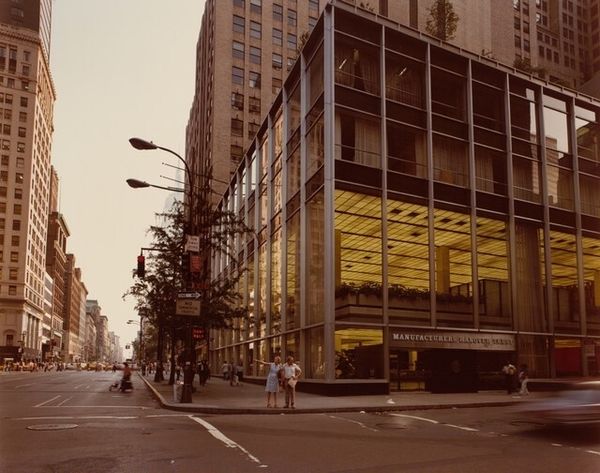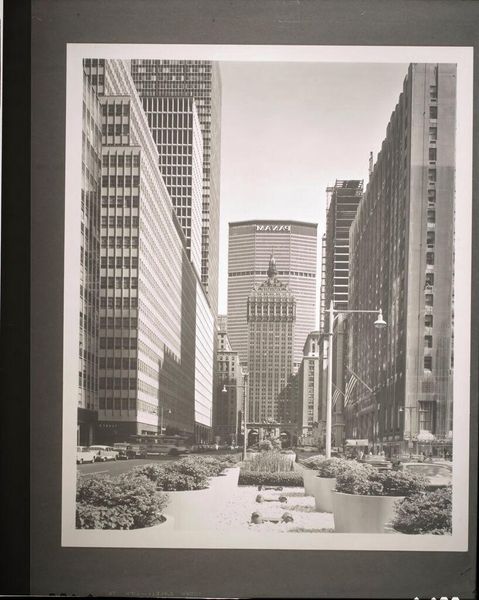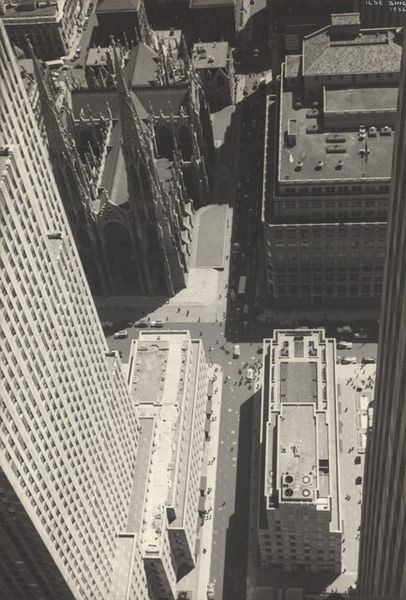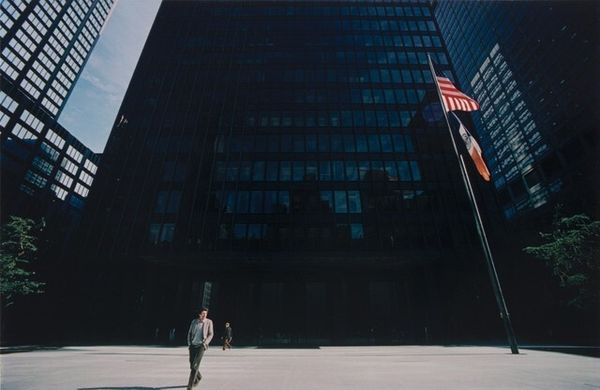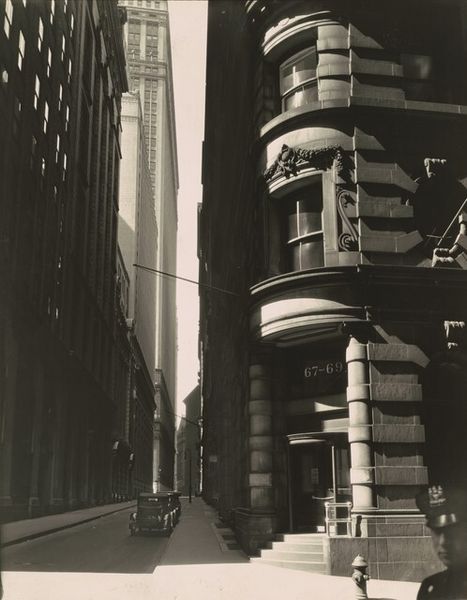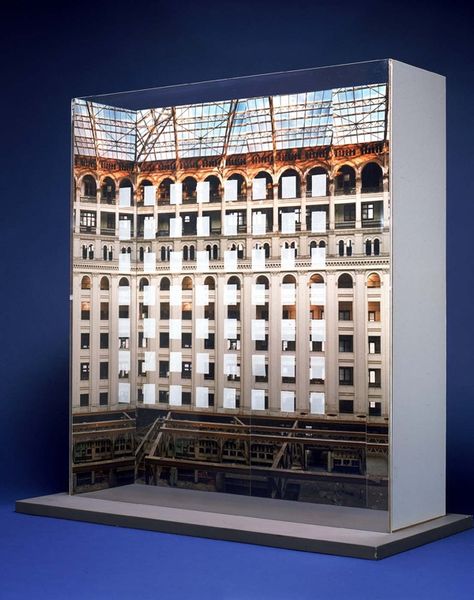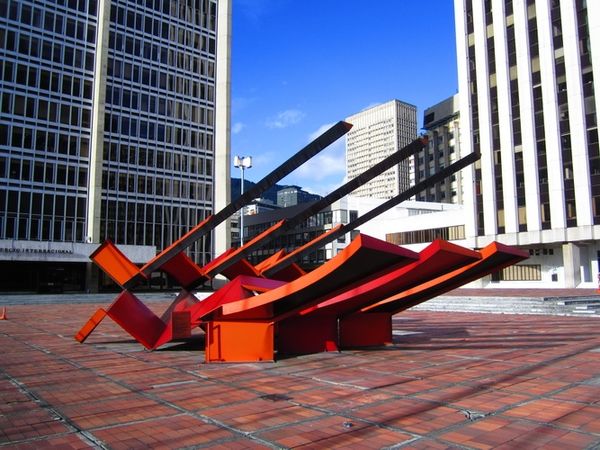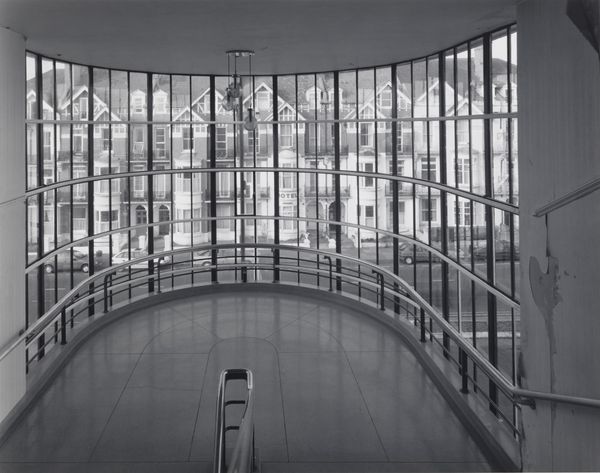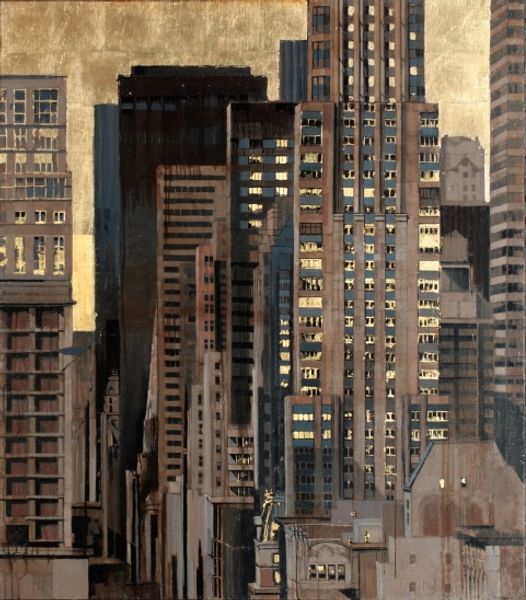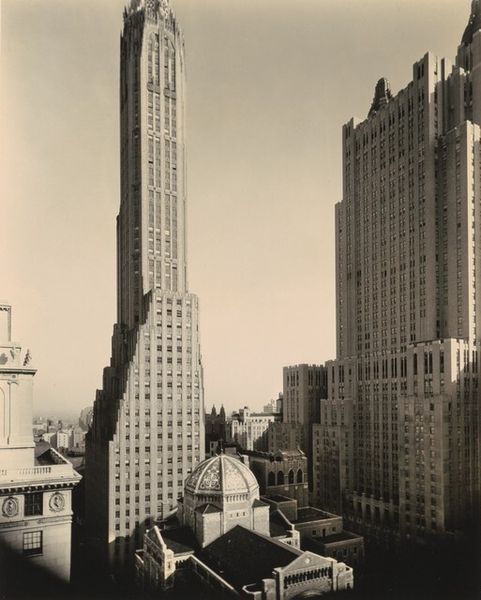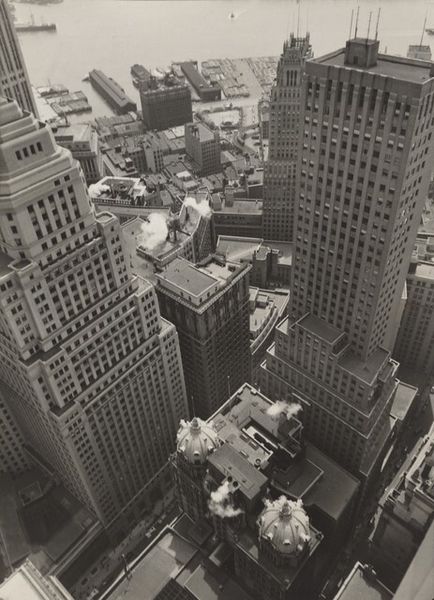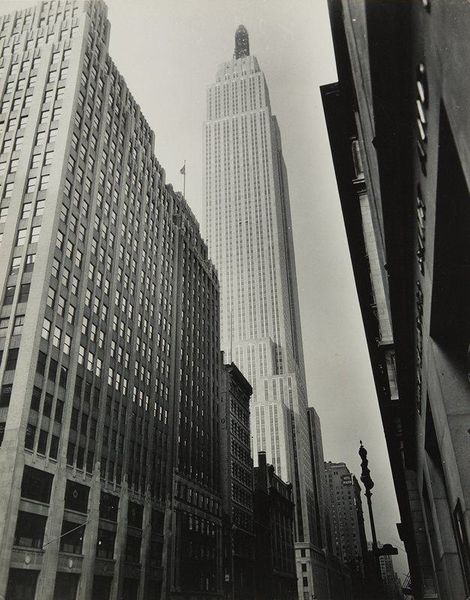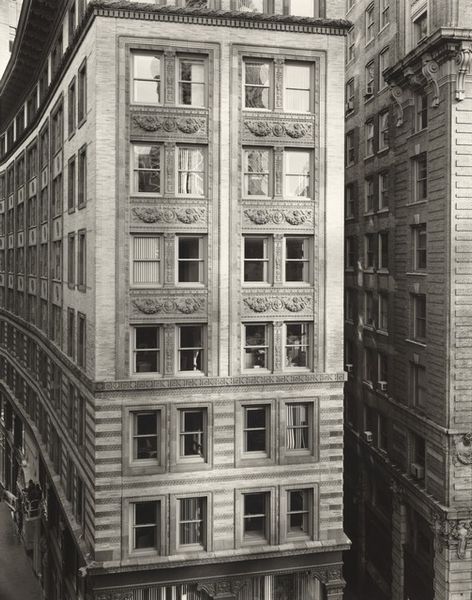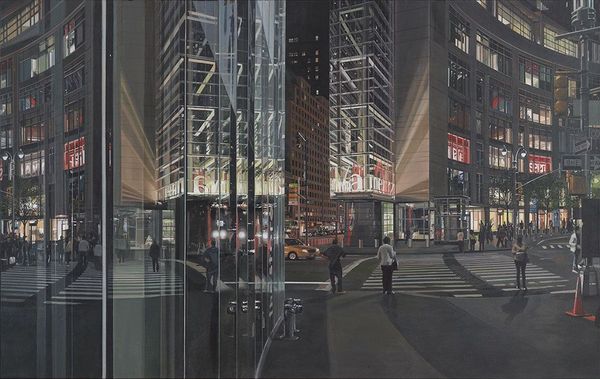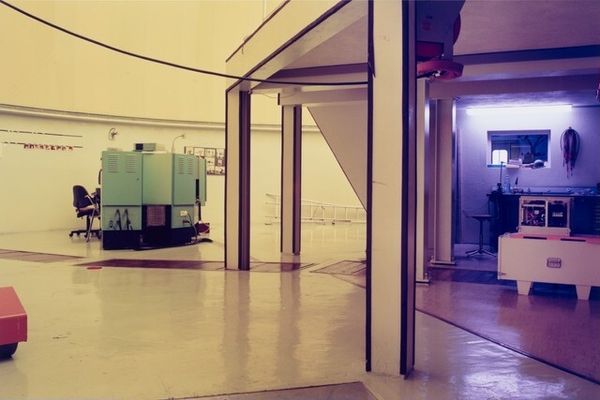
mixed-media, photography, sculpture, site-specific, installation-art
#
mixed-media
#
conceptual-art
#
photography
#
sculpture
#
site-specific
#
installation-art
#
abstraction
#
cityscape
#
modernism
Copyright: Rachel Whiteread,Fair Use
Curator: Today we’re looking at Rachel Whiteread’s “Water Tower” from 1998, a mixed-media sculpture installed on a rooftop in New York City. Editor: My initial impression is one of ghostly presence, like a relic from another era amidst the sleek, modern skyscrapers. The translucent material gives it an ethereal quality, yet the form itself is quite industrial. Curator: Indeed. Whiteread is known for casting everyday objects and architectural spaces. This piece, being site-specific, literally inverts our expectations, highlighting the form of an overlooked functional object—a water tank. Editor: Exactly. By focusing on negative space and the cast-off, she makes visible what's often unseen or undervalued in the urban landscape. Consider how water towers are symbols of municipal infrastructure, crucial for city life, yet they recede into background noise for most. Curator: The visual contrast between the opaque steel infrastructure and the translucent polymer structure is striking, yes? This allows a play of light and shadow across its surface. In doing so, the geometry itself appears softened and organic. Editor: But I'd argue that choosing this location, specifically within Manhattan's visual and economic hierarchy, she confronts notions of value and visibility. Who controls resources? Whose labor is invisible? Does a focus on abstraction also perpetuate invisibility? Curator: Perhaps, or it offers a chance to slow down, to consider our surroundings in a new way through shape and texture. It prompts us to contemplate the object as art itself, and as an integrated element of design in an industrial context. Editor: Right, but beyond shape and texture, this reminds me of thinking of art that actively engages with environmental or political interventions—by recasting the industrial landscape she offers a unique vantage point of what a capitalist-driven, vertical living feels like. Curator: Well, however you want to look at it, the ghostly water tower provokes consideration of objecthood, material, and what we chose to recognize as meaningful within built environments. Editor: Precisely, whether as formal abstraction or as a sociopolitical mirror, Whiteread urges a dialogue that expands what we expect to “see” in our shared spaces.
Comments
No comments
Be the first to comment and join the conversation on the ultimate creative platform.
